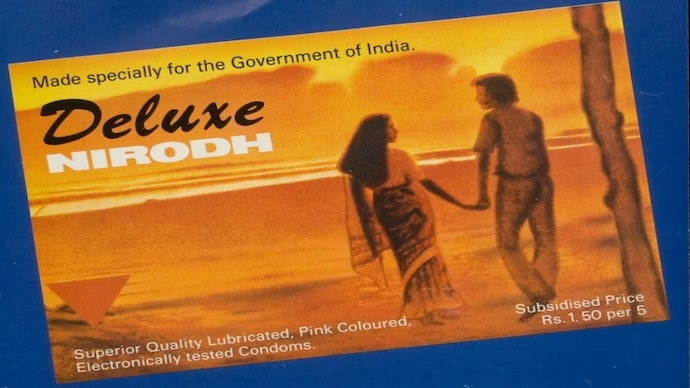Iconic Ads: Apple – Get A Mac

Apple – Get A Mac was a campaign to show a softer side of Mac and thereby bring up the superiority of it over the PC
Mac sales had declined in the mid-2000s, so Apple wanted to offer customers a softer, human side of the Mac.
Furthermore, a new Intel-based Mac was about to be released, which was significant for Steve Jobs because it would be the first with an extremely fast chip. It was a case of Microsoft being beaten at its own game. He was hoping for a massive campaign to back it up.
Briefs with Steve weren’t as formal as they were at a traditional firm, where a planner/ marketing person would deliver pages and pages of strategy deck. “You know what?” Steve would say. “Mac is in desperate need of a campaign. We want you guys to come up with something.” That was all there was to it.
There was a weekly meeting called Marcom in Cupertino where Chiat Day, the advertising agency, would show him ideas. He would give his thoughts, and they would get another week to zero in on what he was saying.
People were buying PCs because they were given PCs at work, is what Chiat Day saw. People didn’t always know why they were purchasing a computer.
Steve had a strong desire to take out the PCs.
For six months, Chiat Day presented Jobs with ten to fifteen ideas every week. For each idea, it was a 360-degree campaign. That’s the calibre of work Steve was looking for.
As Jobs went through each he would say, “That’s fucking stupid. That is so inane. Who the hell cares about that?
Then Elena Hale, planning director, and her team presented studies demonstrating that the issue isn’t that people are unaware of Mac’s superiority. The issue is that people who use computers don’t realise how bad PCs are. “We can’t just talk about the benefits of Mac,” the people at Chiat Day reasoned. We also need to discuss the PC’s difficulties or obstacles.”
Early in 2006, Apple’s Intel-powered Macs began shipping well ahead of schedule, with the transition deadline being advanced from December 2007 to December 2006. Jobs became angrier with Chiat Day as a result of the lack of a campaign to market the product. Jobs said, “Where’s my campaign?” “If you can’t do it, we got to find someone that can.”
Scott Trattner and Eric Grunbaum experienced a breakthrough moment in March 2006, thanks to a suggestion from associate creative director Barton Corley.
Scott had a younger sister, and at her school, he was witnessing these plays where a kid plays a tree and another plays a rock. He recalled being enthralled by the idea that a child’s role in a play could be a ‘rock’ star.
“You know, it’s almost like we have to get so basic,” Eric stated to Scott when they were surfing in Malibu and were discussing their dissatisfaction with coming up with a concept. “It’s as if we need a Mac and a PC on a white background with a sign that says, “This is a Mac.” It is good in A, B, and C. And there is a PC, which is good at D, E, and F.”
“What if we represent the two characters?” Scott Trattner recalled saying to Barton. ‘I’m a Mac,’ one man could say. ‘I’m a PC,’ one man could say. The Mac may be circling the PC on roller skates, bragging about how fast he is.” Barton simply took it and expanded on it.
“OK, let’s keep it as easy as possible,” Barton said to Scott. A Mac enters a room. “What does he have to say?” “Hello, I’m a Mac,” Scott said. “Yeah, and there may be a man who says, ‘I’m a PC,’ and they talk about computers,” he continued.
After that, they worked things out. Barton wrote a couple of charming scripts. They pitched to Lee Clow (Head of Creative). There was a long silence, followed by a fantastic smile. Lee could be equally dismissive like Jobs!
“What if the PC has a virus, like a cold, and he’s sneezing?” Barton wondered. “Virus” was written by Scott and him. That was the first spot they wrote.=
The following week, they were presenting t Steve Jobs. Scott was dressed in a “PC” tee. Barton was dressed in a “Mac” tee. Steve was putting his feet on the table with the same hatred he had when he first saw it, anticipating it to be a disaster.
And Steve liked the idea.
Justin Long was brought in as a result of Jobs’ suggestion. He thought he was a rising celebrity after seeing him in “Herbie: Fully Loaded.”
The initial original six were written by Barton Corley and Scott. Then, when they realised this was a big idea and they’d be filming a lot, Jason Sperling stepped in to assist shape the voice.
In the first round, the team scored 12 points. Jobs turned down eight of them, preferring to focus on “the ones that were fantastic.”
Over three years, the crew shot 323 commercials to get the 66 that were shown. The last spots were shot in October 2009, just before Jobs launched the iPad in January 2010 and shifted the company’s focus.
For reference visit – https://www.campaignlive.com/article/oral-history-get-mac-part-1/1417003?curator=MediaREDEF



